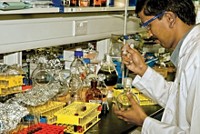Advertisement
Grab your lab coat. Let's get started
Welcome!
Welcome!
Create an account below to get 6 C&EN articles per month, receive newsletters and more - all free.
It seems this is your first time logging in online. Please enter the following information to continue.
As an ACS member you automatically get access to this site. All we need is few more details to create your reading experience.
Not you? Sign in with a different account.
Not you? Sign in with a different account.
ERROR 1
ERROR 1
ERROR 2
ERROR 2
ERROR 2
ERROR 2
ERROR 2
Password and Confirm password must match.
If you have an ACS member number, please enter it here so we can link this account to your membership. (optional)
ERROR 2
ACS values your privacy. By submitting your information, you are gaining access to C&EN and subscribing to our weekly newsletter. We use the information you provide to make your reading experience better, and we will never sell your data to third party members.
Policy
Science Indicators
NSB's biennial report shows science and engineering is increasingly global
by Susan R. Morrissey
February 27, 2006
| A version of this story appeared in
Volume 84, Issue 9
Although the U.S. remains a world leader in science and technology, Asian countries such as China are gaining on that lead, according to "Science & Engineering Indicators 2006." The report, which also shows that European Union countries and Japan are losing ground, was released by the National Science Board (NSB) on Feb. 23.
In addition to international science and technology trends, the report includes information specific to the U.S. For example, the report states that growth in science and engineering jobs in the U.S. outpaced the number of U.S. science and engineering degrees awarded. Also, the report finds that, in 2003, one-third of U.S. science and engineering doctorates and more than half of engineering doctorates were earned by foreign students.
The data also show that U.S. students continue to be outperformed in science and mathematics by their international peers. To highlight this trend, NSB released a companion policy statement to the indicators report. The statement emphasizes the need for improvements to precollege science, technology, engineering, and mathematics (STEM) education.
"Our nation must devote the necessary resources now to revitalize our precollege STEM education system," writes NSB Chairman Warren M. Washington in a letter preceding the policy statement. He notes that such STEM education is key for the U.S. to remain a leader in science and technology and thereby ensure "our nation's long-term prosperity and security."
The indicators report is a congressionally mandated collection of science, technology, and engineering data released biennially. The full report is available at www.nsf.gov/statistics/seind06.




Join the conversation
Contact the reporter
Submit a Letter to the Editor for publication
Engage with us on Twitter